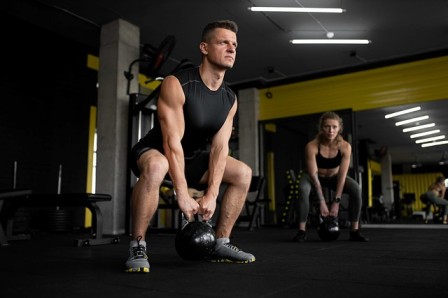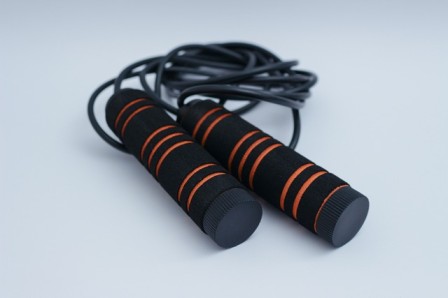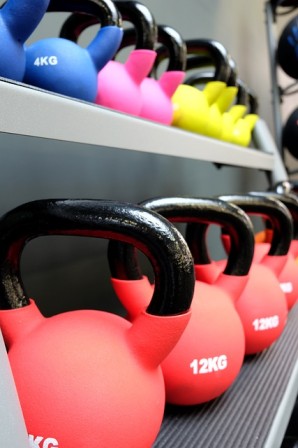HIIT Workouts: Benefits, Science, and Training Tips

What is HIIT Workout?
High-Intensity Interval Training (HIIT) is a workout strategy that involves short bursts of intense exercise alternated with low-intensity recovery periods. It is known for being time-efficient and effective in improving cardiovascular health, burning fat, and building muscle. HIIT workouts can be adapted to various forms of exercise, including running, cycling, swimming, and bodyweight exercises.
For more information and knowledge you can enroll in this online video course HIIT It Hard (How To Melt Fat And Optimize Performance With HIIT Workouts)
Benefits of HIIT

1. Efficient Calorie Burning
HIIT can burn a lot of calories in a short amount of time. Studies have shown that 15 minutes of HIIT can burn more calories than a traditional 45-minute workout.
2. Increased Metabolic Rate
HIIT keeps your metabolic rate higher for hours after exercise, a phenomenon known as excess post-exercise oxygen consumption (EPOC). This means you continue to burn calories even after your workout is done.
3. Improved Cardiovascular Health
HIIT improves heart health by enhancing cardiovascular efficiency and lowering blood pressure. Regular HIIT workouts can lead to better overall heart health and reduce the risk of cardiovascular diseases.
4. Fat Loss and Muscle Gain
HIIT workouts are effective for fat loss while preserving muscle mass. The high-intensity bursts stimulate muscle growth, while the intervals of lower intensity help in fat oxidation.
5. Time Efficiency
HIIT is ideal for people with busy schedules. A complete HIIT workout can be done in as little as 20-30 minutes, making it easy to fit into a hectic day.
6. Versatility and Adaptability
HIIT can be performed with various exercises, allowing for a wide range of workout options. Whether using bodyweight exercises, running, cycling, or equipment like kettlebells, HIIT can be tailored to individual preferences and fitness levels.
The Science of HIIT

HIIT works by pushing your body to near maximal effort during high-intensity periods, followed by short recovery intervals. This creates a metabolic demand that is very effective for burning fat and improving cardiovascular fitness.
Physiological Mechanisms
- Anaerobic and Aerobic Systems: HIIT engages both the anaerobic (high-intensity) and aerobic (low-intensity) energy systems. This dual engagement improves overall fitness and endurance.
- Hormonal Responses: HIIT stimulates the release of growth hormone and adrenaline, which are essential for fat loss and muscle gain. It also helps in regulating insulin sensitivity.
- Muscle Adaptation: The intense bursts in HIIT lead to muscle micro-tears, which when repaired, result in stronger and more resilient muscle fibers.
Scientific Studies
Numerous studies have confirmed the effectiveness of HIIT in improving cardiovascular health, boosting metabolism, and aiding in weight loss. For instance, a study published in the Journal of Obesity highlighted that HIIT is more effective at reducing visceral fat compared to steady-state cardio.
How to Start HIIT Training With Running

Step-by-Step Guide
- Warm-Up: Start with a 5-10 minute warm-up to prepare your muscles and cardiovascular system. This can include dynamic stretches and light jogging.
- Intervals: Begin with a 1:2 ratio of work to rest. For example, sprint for 30 seconds, then walk or jog for 60 seconds. Repeat this cycle for 15-20 minutes.
- Progression: As your fitness improves, increase the intensity or duration of the sprint intervals. Aim for a 1:1 ratio (e.g., 30 seconds sprinting, 30 seconds walking).
- Cool Down: Finish with a 5-10 minute cool-down to help your body recover. This can include light jogging and static stretches.

Tips for Beginners
- Start Slow: Begin with lower intensity and gradually increase the intensity and duration of the intervals.
- Listen to Your Body: Pay attention to how your body responds and avoid pushing too hard too soon.
- Consistency: Aim for at least three HIIT sessions per week to see significant improvements.
How to Get Better HIIT Results

Consistency and Progression
- Consistency: Regular HIIT workouts are key to seeing results. Aim to include HIIT in your routine at least 2-3 times per week.
- Progression: Gradually increase the intensity and duration of your intervals to continue challenging your body and making progress.
Nutrition and Recovery
- Balanced Diet: Fuel your body with a balanced diet rich in protein, healthy fats, and carbohydrates to support your workouts and recovery.
- Hydration: Stay hydrated before, during, and after your workouts.
- Rest and Recovery: Allow your body to recover with adequate sleep and rest days between intense HIIT sessions.
Tracking Progress
- Metrics: Use a heart rate monitor or fitness tracker to monitor your intensity and progress.
- Journaling: Keep a workout journal to track your workouts, intensity, and how you feel.
Concurrent Training and Using Kettlebells

Click for detailed information
Combining HIIT with Strength Training
Concurrent training involves combining cardio and strength training in the same session or on the same day. HIIT can be effectively combined with strength training using kettlebells.
Benefits of Kettlebells in HIIT
- Versatility: Kettlebells can be used for a wide range of exercises that target different muscle groups.
- Efficiency: Kettlebell exercises can improve strength, endurance, and cardiovascular fitness simultaneously.
- Functional Strength: Kettlebell exercises often mimic natural movement patterns, improving functional strength and mobility.
Sample Kettlebell HIIT Routine

- Warm-Up: 5 minutes of dynamic stretches and light cardio.
- Circuit:
- Kettlebell Swings (30 seconds)
- Rest (15 seconds)
- Goblet Squats (30 seconds)
- Rest (15 seconds)
- Kettlebell Deadlifts (30 seconds)
- Rest (15 seconds)
- Kettlebell Press (30 seconds)
- Rest (15 seconds)
- Repeat the circuit 3-4 times.
- Cool Down: 5 minutes of static stretches.
Creating Whole-Body Circuit Routines
Whole-body circuit routines are an excellent way to incorporate HIIT into your fitness regimen. These routines target multiple muscle groups and provide a comprehensive workout.
Designing a Circuit
- Choose Exercises: Select 5-6 exercises that target different muscle groups (e.g., push-ups, squats, lunges, burpees, and planks).
- Set Intervals: Perform each exercise for 30-45 seconds, followed by 15-30 seconds of rest.
- Repeat: Complete the circuit 3-4 times with minimal rest between circuits.
Example Whole-Body HIIT Circuit

- Jumping Jacks (30 seconds)
- Push-Ups (30 seconds)
- Squats (30 seconds)
- Mountain Climbers (30 seconds)
- Plank (30 seconds)
- Rest (30 seconds)
- Repeat 3-4 times
How to Add HIIT to a Healthy Lifestyle

Balanced Routine
Incorporate HIIT into a balanced fitness routine that includes strength training, flexibility exercises, and rest days.
Nutrition
Support your workouts with a diet rich in whole foods, including lean proteins, fruits, vegetables, whole grains, and healthy fats.
Hydration
Stay hydrated by drinking plenty of water throughout the day and especially during your workouts.
Sleep and Recovery
Ensure you get adequate sleep and recovery time to allow your muscles to repair and grow.
Mental Health
Incorporate mindfulness practices, such as yoga or meditation, to support your mental well-being alongside your physical health.
Conclusion
High-intensity interval Training (HIIT) is a powerful and versatile workout method that offers numerous benefits, including improved cardiovascular health, efficient calorie burning, and increased muscle strength. By understanding the science behind HIIT and following practical tips for starting and progressing your training, you can effectively incorporate HIIT into your fitness routine. Whether you choose to run, use kettlebells, or create whole-body circuit routines, HIIT can be adapted to suit your needs and help you achieve your fitness goals. Remember to balance your HIIT workouts with proper nutrition, hydration, rest, and mental health practices to maintain a healthy lifestyle.
Follow for more information and knowledge on HIIT It Hard (How To Melt Fat And Optimize Performance With HIIT Workouts)
